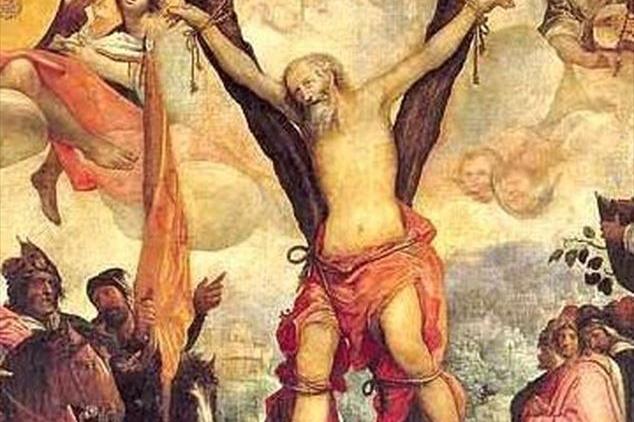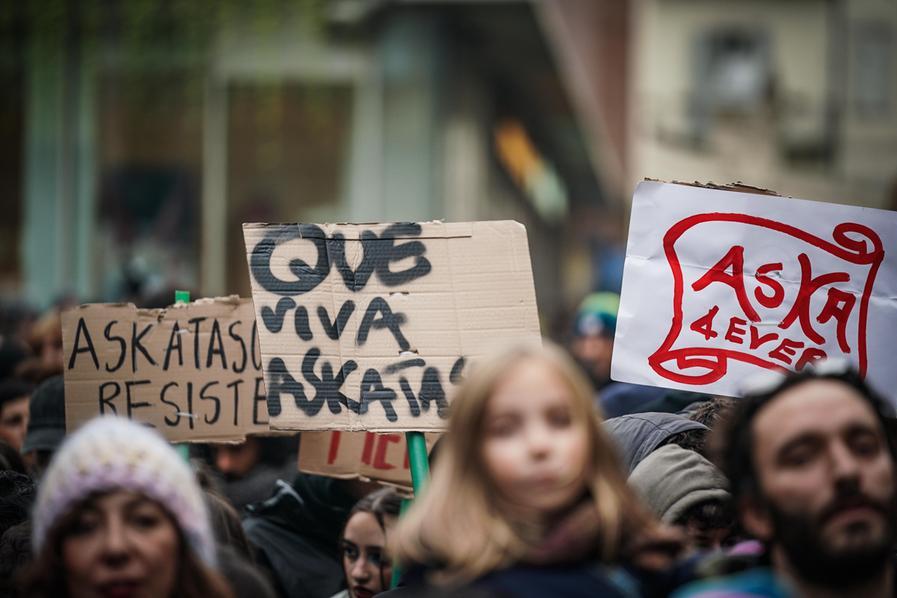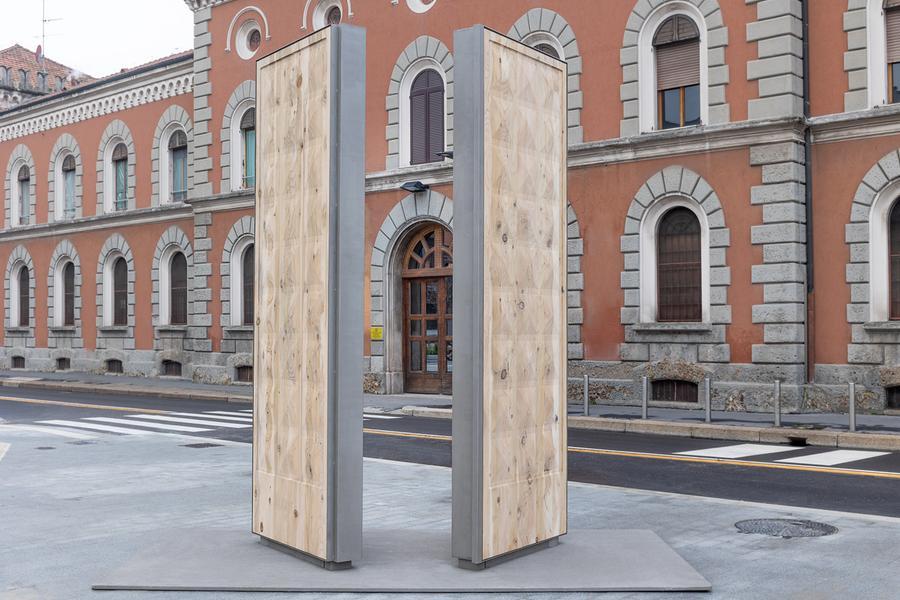Saint Andrew the Apostle is celebrated on November 30th in the Eastern and Western Churches and is a national holiday in Scotland. Named according to Orthodox tradition Protocletos or the First called because he was the first of John the Baptist’s disciples to be called by the Lord Jesus to the Jordan. He was born in Bethsaida and died in Patras on November 30, 60. He is the patron saint of fishermen, since he himself practiced this profession.
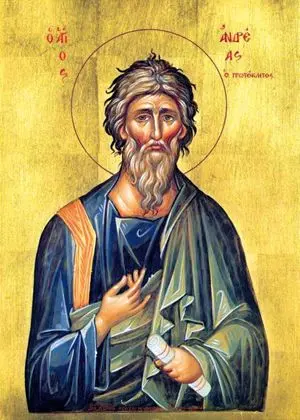
The first meeting with Jesus
In the Gospel of John, in the first chapter, the time (“four in the afternoon”) of his first meeting and first appointment with Jesus is even noted. It was then Andrew who communicated the discovery of the Messiah to his brother Simon Peter and quickly led him to Him. His presence is particularly underlined in the episode of the multiplication of the loaves. We also know that, precisely to Andrew, some Greeks who wanted to know Jesus turned, and he led them to the Divine Master. We have no other certain information about him, even if, in the following centuries, some Acts concerning him were disclosed, but which have little reliability. According to ancient Christian writers, the apostle Andrew evangelized Asia Minor and the regions along the Black Sea, reaching as far as the Volga. He is therefore honored as a patron saint in Romania, Ukraine and Russia. Moving is the “passion” – also late – which recounts the death of the apostle, which supposedly took place in Patras, in Achaea: condemned to the torture of the cross, he himself asked to be hung on a particular cross made in the shape of an The Golden Legend reports that Andrew went to meet his cross with this splendid invocation on his lips: «Hail Cross, sanctified by the body of Jesus and embellished with the gems of his blood… I come to you full of security and joy, so that you may receive the disciple of Him who died on you. Good cross, long desired, which the Lord’s members have clothed with such beauty! I have always loved you and wanted to hug you.”
The Call on the Sea of Galilee
Then comes the call. The two brothers, Andrew and Peter, have returned to their work as fishermen on the “Sea of Galilee”: but they suddenly abandon everything when Jesus arrives and says: “Follow me, I will make you fishers of men” (Matthew 4,18-20). We then find Andrew in the small group – with Peter, James and John – who on the Mount of Olives, “apart”, questions Jesus about the signs of the end times: and the answer is known as the “eschatological discourse” of the Lord, which teaches how one must prepare for the coming of the Son of Man “with great power and glory” (Mark 13).
In the end, Andrew’s name appears in the first chapter of the Acts with those of the other apostles heading to Jerusalem after the Ascension. And then Scripture says nothing else about him, while some apocryphal, i.e. non-canonical, texts speak of him. One of these, from the 2nd century, published in 1740 by Ludovico Antonio Muratori, states that Andrew encouraged John to write his Gospel. And a Coptic text contains this blessing from Jesus to Andrew: “You will be a pillar of light in my kingdom, in Jerusalem, my beloved city. Amen”. The historian Eusebius of Caesarea (ca. 265-340) writes that Andrew preaches the Gospel in Asia Minor and southern Russia. Then, having moved to Greece, he led the Christians of Patras. And here he suffers martyrdom by crucifixion: hung with ropes upside down, according to tradition, from an X-shaped cross; the one later called “St. Andrew’s cross”. This happens around the year 60, a November 30th.
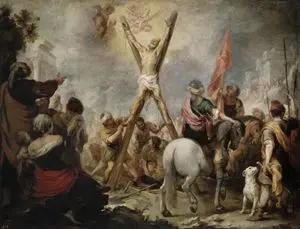

Martyrdom on the decussed cross
Tradition has it that Andrew was crucified on a cross called the decussate cross (X-shaped) and commonly known by the name of “St. Andrew’s Cross”; this was adopted by his personal choice, since he would never have dared to match the Master in martyrdom. This iconography of Saint Andrew, however, appears only around the 10th century, but did not become common until the 17th century. Precisely because of his martyrdom, Saint Andrew also became the patron saint of Patras.
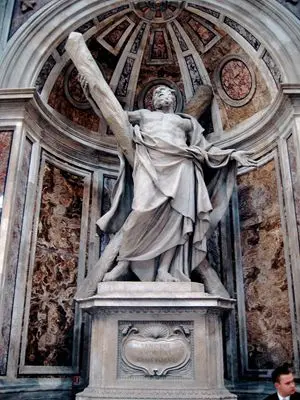

The history of the relics and relations with the Orthodox Church
After his martyrdom, according to tradition, the relics of Saint Andrew were moved from Patras to Constantinople. Local legends say that the relics were sold by the Romans. Sophronius Eusebius Jerome wrote that Andrew’s relics were brought from Patras to Constantinople by order of the Roman emperor Constantius II in 357. Here they remained until 1208 when the relics were brought to Amalfi, Italy, by Cardinal Pietro Capuano, a native of Amalfi. In the 15th century, the head of St. Andrew was brought to Rome, where it was placed in a shrine in one of the four main pillars of St. Peter’s Basilica. In September 1964, as a gesture of openness towards the Greek Orthodox Church, Pope Paul VI handed over a finger and part of his head to the church of Patras.
The Cathedral of Amalfi, dedicated to Saint Andrew (like the city itself), contains a tomb in its crypt which continues to contain some other relics of the apostle. In the sixth century the relic of a hand and an arm of Saint Andrew was donated to Venantius, bishop of Luni, by Pope Gregory the Great, his great friend. It is tradition that at that time, and with the occasion of the gift, the church of Sant’Andrea was built in Sarzana, which became the home of the relic. From that day the apostle became the patron saint of the city. These relics are currently preserved in the Cathedral of Sarzana; it had been brought from Constantinople to Rome by a certain Andrea, butler of the emperor Maurice Tiberius.
The saint’s head was donated, together with other relics (a little finger and some small parts of the cross), by Thomas Paleologus, despot of the Morea overthrown by the Turks, to Pope Pius II in 1461, in exchange for commitment to a crusade that was supposed to retake Constantinople. The pope accepted the gift, promising to return the relics when Greece was liberated and sent the jaw kept in the ancient reliquary to Pienza. By decision of Pope Paul VI in 1964, the relics preserved in Rome were sent back to Patras inside the ancient Byzantine reliquary, until then kept in the Pienza cathedral; in exchange the Pope donated to the cathedral of Pienza the bust-reliquary of the head commissioned by Pius II from Simone di Giovanni Ghini for St. Peter’s Basilica in the Vatican. The relics returned are still kept in the church of Saint Andrew in Patras in a special urn and are shown to the faithful on the occasion of the feast of November 30th.





